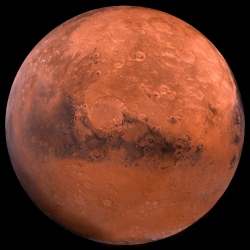
Scientists using the Radiation Assessment Detector (RAD) aboard the Mars Science Laboratory’s Curiosity rover have made detailed measurements of the absorbed dose and dose equivalent from galactic cosmic rays and solar energetic particles on the surface of the Red Planet.
“Our measurements provide crucial information for human missions to Mars. We’re continuing to monitor the radiation environment, and seeing the effects of major solar storms on the surface and at different times in the solar cycle will give additional important data,” said Dr Don Hassler of Southwest Research Institute, who is the lead author of the paper published online in the journal Science.
“Our measurements also tie into Curiosity’s investigations about habitability. The radiation sources that are of concern for human health also affect microbial survival as well as the preservation of organic chemicals.”
Two forms of radiation pose potential health risks to astronauts: a chronic low dose of galactic cosmic rays (GCRs) and the possibility of short-term exposures to the solar energetic particles (SEPs) associated with solar flares and coronal mass ejections.
The radiation on Mars is much harsher than on Earth for two reasons: Mars lacks a global magnetic field and the Martian atmosphere is much thinner than Earth’s, providing little shielding to the surface.
This environmental factor poses a challenge for future human exploration of Mars and is also important in understanding both geological and potential biological evolution on Mars.
